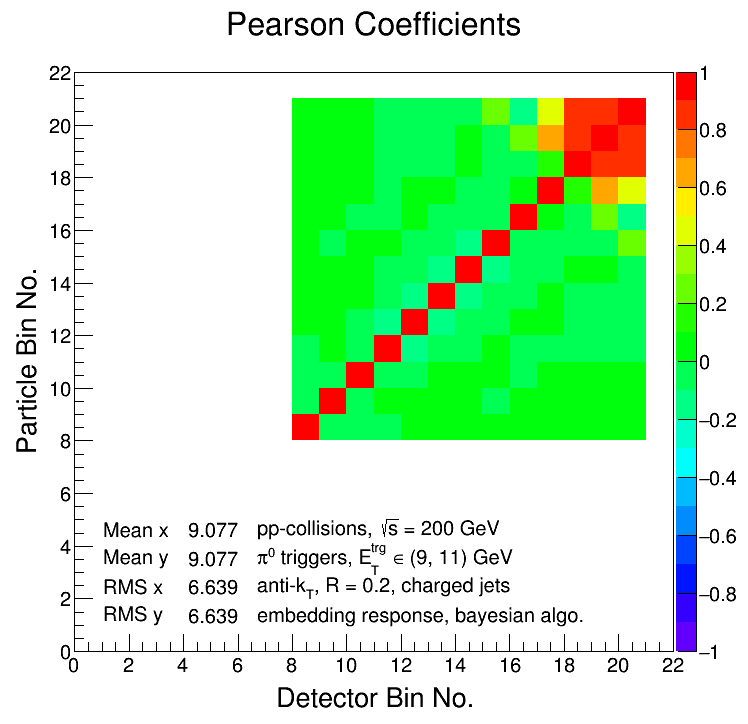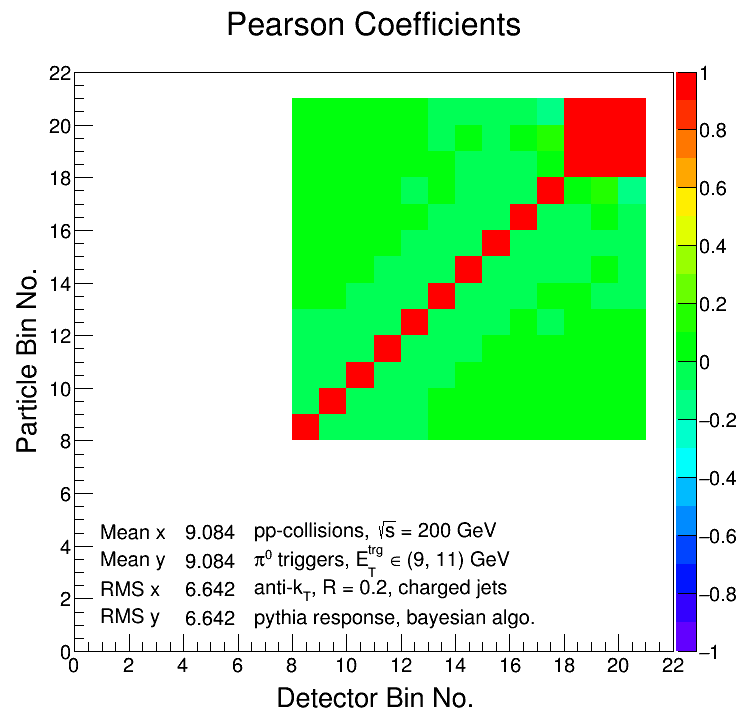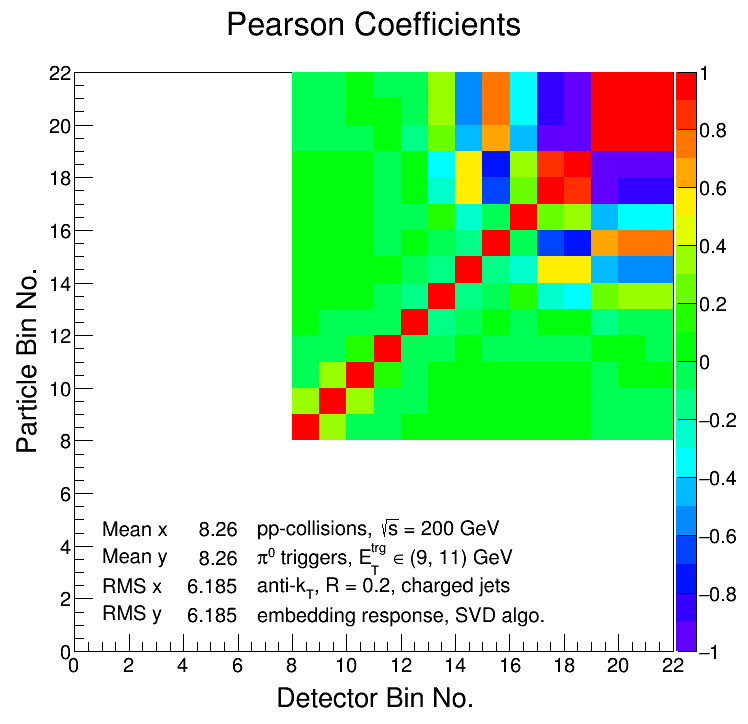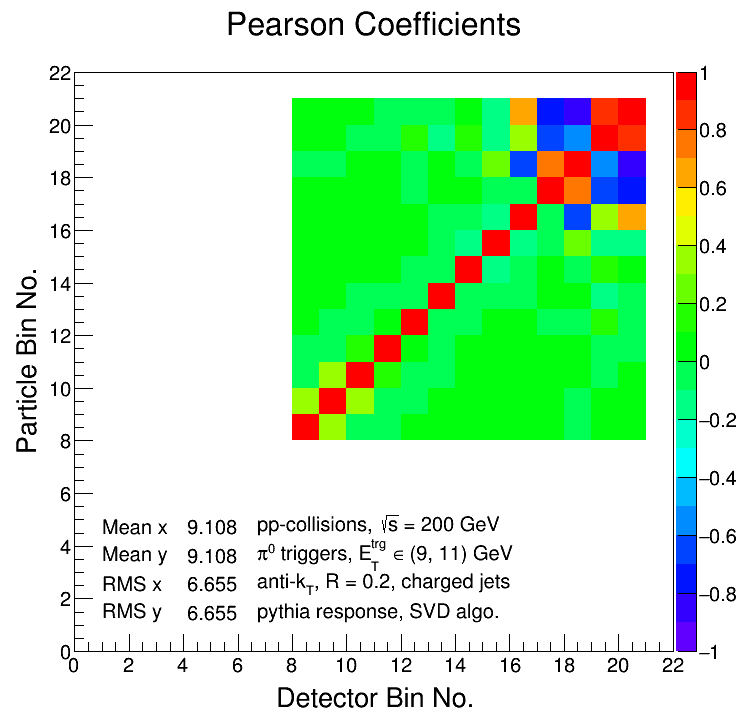JetCorr Follow-Up [09.24.2018] -- Pearson Coefficients
Following discussion both during the weekly JetCorr pwg meeting on the 24th of September (see link below) and offline with Raghav Elayavalli, I've plotted the Pearson Coefficients for 4 different cases.
https://drupal.star.bnl.gov/STAR/blog/dmawxc/jetcorr-update-september-24th-2018
This is part of an ongoing investigation to why the SVD unfolding algorithm performs so poorly for us (we usually don't achieve satisfactory results until k ~ 11, the no. of bins we have to unfold...). Below are some links to earlier entries, including closure tests and plots of the singular values of the response matrix.
https://drupal.star.bnl.gov/STAR/blog/dmawxc/jetcorr-follow-09112018-svd-unfolding-singular-values-and-kreg
https://drupal.star.bnl.gov/STAR/blog/dmawxc/jetcorr-follow-09112018-closure-tests-bayesian-and-svd-unfolding
To try to get an idea what's going on, I unfolded our 9 - 11 GeV pi0-triggered data (R = 0.2, charged jets) 4 times: twice with the Bayesian algorithm (k = 4) using a response calculated from the Run9 dijet embedding sample and an approximation of that response generated in Pythia8; and twice with the SVD algorithm (k = 11) using those same responses. Below are the resulting Pearson Coefficients. [Special thanks to Raghav for providing the code to calculate the coefficients!]




Plots of the response matrices and jet-matching efficiencies are attached, as are the relevant ROOT files.
- dmawxc's blog
- Login or register to post comments
